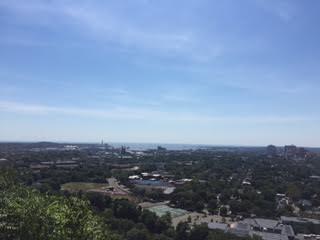United States, New Haven
FC-01x Future Cities (Self-Paced) - Exercise 1 : "Making the Invisible - Visible"

Uploaded on 2016-10-20 by Tyler Lovejoy
The landscape of New Haven, Connecticut reveals much about the city's layout and structure. First, we see the presence of the ocean as visible information, but data is required to fully evaluate and understand how the city interacts with the ocean and how it's coastal identity shapes it's function as a city. Second, we see a diverse use of space. There are parks present in the foreground of the photo, more densely built urban structures to the right, and less dense residential buildings elsewhere. Big data could help us understand how people interact with these diverse forms, allowing us to truly understand the city. Employing big data and making the invisible-visible through various analyses would be effective in future city planning, because we could better understand the needs of citizens as they traverse this cityscape. Considering the previously mentioned diverse areas, including the densely built urban downtown, residential areas, and park space, planners could analyze transportation data to identify more efficient and effective public transportation to properly accomodate citizens, while also identifying disparities across different segments of the population. For example, do all citizens have sufficient access to green space or the ocean? Utilizing big data can improve the connectivity of a city in this way.